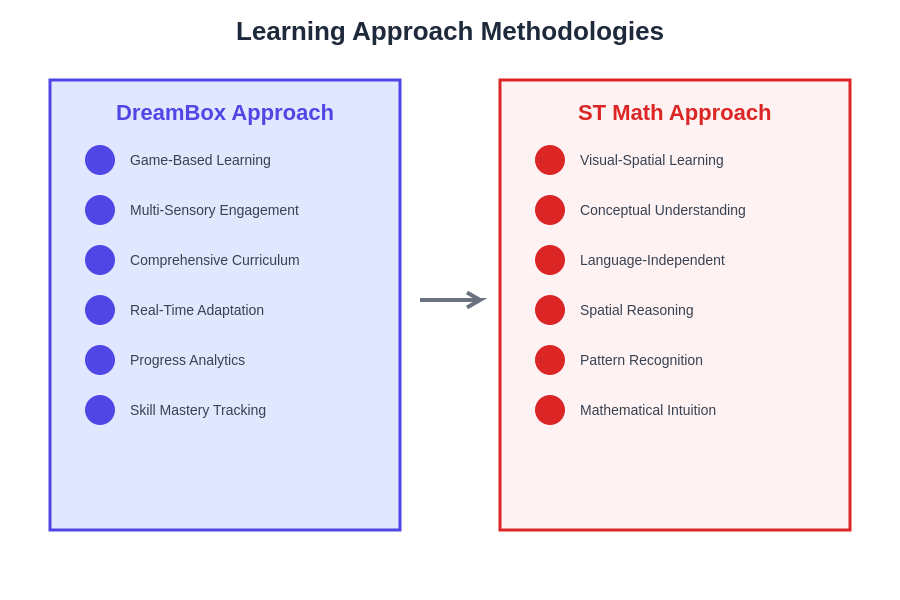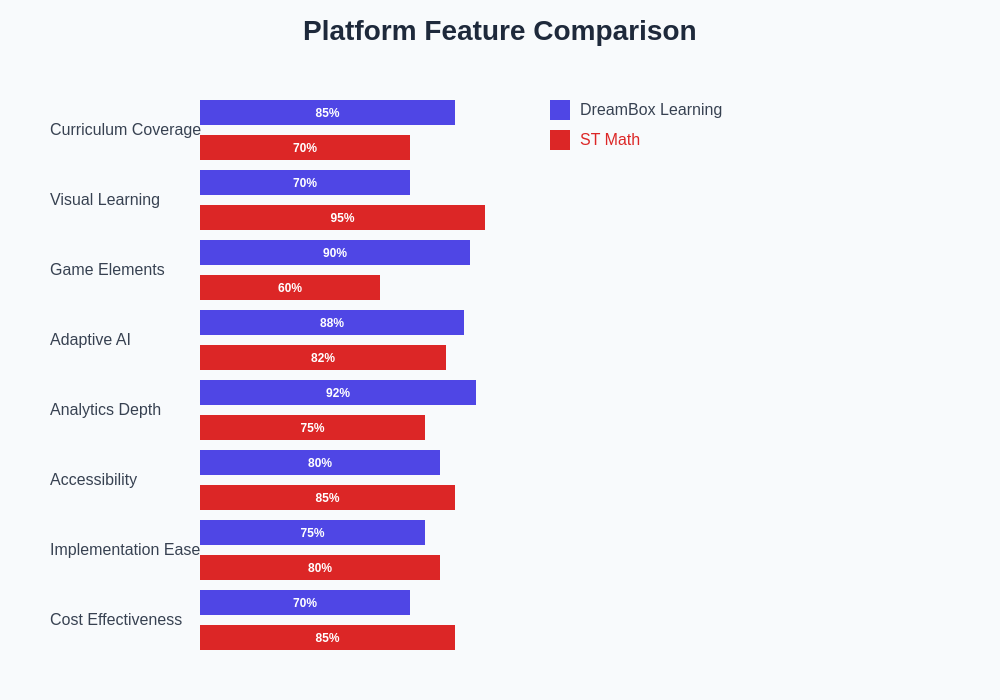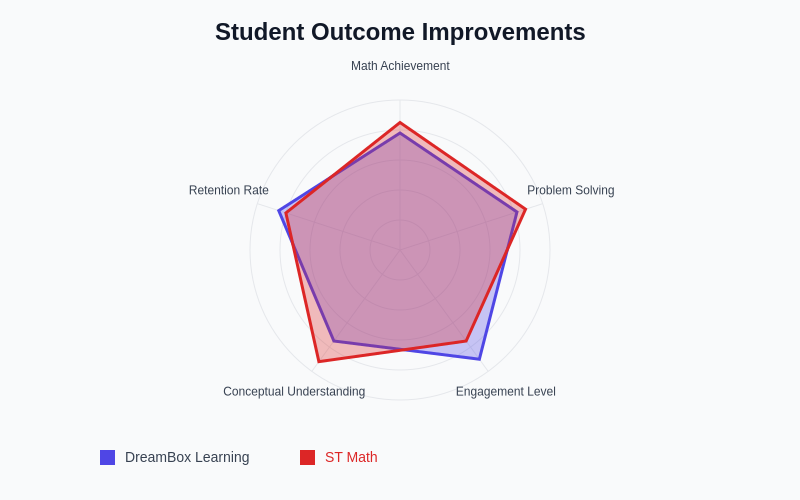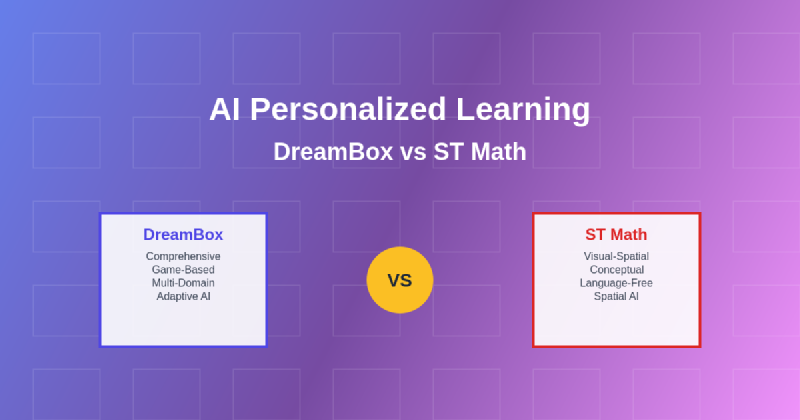The revolution in educational technology has reached unprecedented heights with the emergence of artificial intelligence-powered adaptive learning platforms that fundamentally transform how students engage with mathematical concepts and problem-solving methodologies. Among the most prominent and innovative solutions in this rapidly evolving landscape stand DreamBox and ST Math, two distinctive platforms that leverage sophisticated AI algorithms to deliver personalized learning experiences tailored to individual student needs, learning patterns, and cognitive development stages.
Explore the latest educational AI trends to understand how technology is reshaping classroom dynamics and student engagement across diverse learning environments. The integration of artificial intelligence into educational platforms represents a paradigmatic shift from traditional one-size-fits-all approaches toward highly individualized learning pathways that adapt in real-time to student performance, preferences, and comprehension levels.
Understanding Adaptive Learning Technologies
The foundation of modern adaptive learning platforms rests upon sophisticated artificial intelligence systems that continuously analyze student interactions, performance patterns, and learning behaviors to create dynamic educational experiences that evolve with each learner’s unique journey. These platforms represent a significant departure from static educational content delivery methods, instead employing machine learning algorithms that process vast amounts of data to identify optimal learning paths, predict potential difficulties, and provide targeted interventions precisely when students need additional support or accelerated challenges.
DreamBox and ST Math exemplify this technological evolution by implementing distinct approaches to AI-powered personalization, each bringing unique strengths and methodologies to the educational landscape. While both platforms share the common goal of improving mathematical understanding and student outcomes, their underlying philosophies, instructional strategies, and technological implementations differ significantly, creating compelling options for educators seeking to enhance their mathematics instruction through adaptive learning technologies.
The effectiveness of these platforms stems from their ability to move beyond traditional assessment-based feedback loops toward continuous, real-time adaptation that responds to subtle indicators of student understanding, engagement, and cognitive load. This sophisticated approach enables the platforms to provide precisely calibrated challenges that maintain optimal learning zones while preventing frustration or boredom that can derail educational progress.
DreamBox: Comprehensive Mathematical Journey
DreamBox Learning has established itself as a pioneering force in adaptive mathematics education by creating an immersive, game-based learning environment that seamlessly integrates rigorous mathematical content with engaging interactive experiences designed to capture and maintain student attention while fostering deep conceptual understanding. The platform’s artificial intelligence engine operates through sophisticated real-time analysis of student actions, decisions, and problem-solving strategies, enabling it to adapt not only the difficulty level of presented content but also the instructional approach, pacing, and support mechanisms provided to each individual learner.
The platform’s adaptive technology extends far beyond simple right-or-wrong answer analysis, instead examining the methods students use to approach problems, the time they spend on different types of questions, their response patterns, and even their hesitation or confidence levels when making mathematical decisions. This comprehensive data collection enables DreamBox to create detailed learning profiles that inform instructional decisions and ensure that each student receives precisely the type and level of support needed to progress effectively through increasingly complex mathematical concepts.
Experience advanced AI learning with Claude to understand how sophisticated reasoning capabilities can enhance educational technology and provide more nuanced support for complex learning scenarios. DreamBox’s integration of multiple data streams creates a holistic view of student learning that enables highly personalized educational experiences that adapt not just to what students know, but how they learn best.
ST Math: Visual-Spatial Learning Revolution
ST Math, developed by MIND Research Institute, represents a fundamentally different approach to adaptive mathematics education through its emphasis on visual-spatial learning methodologies that eliminate language barriers and create universally accessible mathematical experiences. The platform’s unique strength lies in its sophisticated use of visual representations, spatial reasoning challenges, and conceptual model-building exercises that enable students to develop deep mathematical understanding through intuitive, visual problem-solving experiences that transcend traditional linguistic and cultural boundaries.
The artificial intelligence powering ST Math focuses primarily on analyzing student interactions with visual mathematical models, tracking how learners manipulate spatial representations, and identifying patterns in visual problem-solving approaches that indicate conceptual understanding or areas requiring additional support. This visual-first methodology proves particularly effective for students who struggle with traditional text-based mathematical instruction or those whose primary learning modalities align more closely with spatial and visual processing strengths.
The platform’s adaptive mechanisms operate through continuous analysis of student progress through carefully sequenced visual puzzles and interactive mathematical models that build upon one another to create comprehensive understanding of fundamental mathematical principles. ST Math’s AI algorithms track not only correct solution paths but also the efficiency and creativity of student approaches, enabling the platform to provide targeted feedback and adjust challenge levels to maintain optimal engagement and learning progression.

The fundamental distinction between these platforms becomes evident when examining their core pedagogical approaches and technological implementations. While DreamBox emphasizes comprehensive game-based learning with multi-sensory engagement, ST Math focuses on visual-spatial learning methodologies that build mathematical intuition through language-independent experiences.
Comparative Analysis of AI Personalization Approaches
The fundamental difference between DreamBox and ST Math lies in their respective approaches to artificial intelligence implementation and personalization strategies, creating distinct learning experiences that serve different educational objectives and student populations. DreamBox employs a comprehensive data analytics approach that examines multiple dimensions of student interaction, including response accuracy, solution strategies, engagement patterns, and learning velocity, to create detailed learner profiles that inform highly granular instructional adaptations across diverse mathematical topics and skill areas.
ST Math’s AI personalization focuses more specifically on visual-spatial learning analytics, analyzing how students interact with graphical representations, manipulate visual models, and progress through spatially-oriented problem-solving sequences. This specialized approach enables ST Math to provide particularly effective support for students whose learning styles align with visual and spatial processing strengths, while also serving students who may struggle with language-heavy mathematical instruction or those from diverse linguistic backgrounds.
The scope of personalization also differs significantly between the platforms, with DreamBox offering broader curricular coverage that spans multiple grade levels and mathematical domains, while ST Math concentrates more intensively on fundamental mathematical concepts presented through its distinctive visual-spatial methodology. These different approaches create complementary strengths that serve diverse educational contexts and student populations with varying learning needs and preferences.

This comprehensive analysis reveals distinct strengths and focus areas for each platform, with DreamBox excelling in game-based engagement and comprehensive analytics, while ST Math demonstrates superiority in visual learning approaches and accessibility for diverse learners.
Effectiveness Metrics and Student Outcomes
Research studies and implementation data demonstrate that both DreamBox and ST Math produce measurable improvements in student mathematical achievement, though their effectiveness patterns differ based on student populations, implementation contexts, and specific learning objectives. DreamBox has consistently shown strong results in improving computational fluency, problem-solving skills, and mathematical confidence across diverse student populations, with particularly notable gains observed in students who engage regularly with the platform’s adaptive learning pathways.
ST Math’s effectiveness research highlights significant improvements in mathematical reasoning, spatial thinking skills, and conceptual understanding, particularly among students who have previously struggled with traditional mathematics instruction or those from underserved educational communities. The platform’s visual approach has proven especially effective in closing achievement gaps and improving mathematical outcomes for English language learners and students with diverse learning differences.
Enhance your research capabilities with Perplexity to access comprehensive data analysis and evidence-based insights that support educational decision-making and platform selection processes. The comparative effectiveness of these platforms often depends on specific implementation factors, student characteristics, and educational objectives that require careful consideration during platform selection and deployment processes.

The effectiveness analysis demonstrates that both platforms achieve significant improvements across multiple learning dimensions, with each platform showing particular strengths in areas aligned with their core pedagogical approaches and technological focus areas.
Implementation Strategies and Classroom Integration
Successful implementation of either DreamBox or ST Math requires thoughtful consideration of classroom dynamics, technology infrastructure, and pedagogical integration strategies that maximize the benefits of AI-powered adaptive learning while maintaining coherent connections to broader mathematical curriculum objectives. DreamBox’s comprehensive coverage and detailed reporting capabilities make it particularly well-suited for schools seeking a primary mathematics curriculum supplement that can provide extensive data insights for instructional planning and differentiation strategies.
ST Math’s visual-spatial approach integrates effectively as a conceptual foundation-building tool that complements traditional mathematics instruction by providing visual representations and spatial reasoning experiences that enhance students’ mathematical intuition and problem-solving capabilities. The platform’s design makes it particularly valuable for schools serving diverse student populations or those seeking to address achievement gaps through innovative instructional approaches.
Both platforms require adequate technology infrastructure, professional development for educators, and systematic implementation planning to achieve optimal results. The success of either platform depends significantly on how well schools integrate the adaptive learning experiences with existing curriculum structures, assessment practices, and instructional methodologies to create coherent and comprehensive mathematical learning environments.
Teacher Support and Professional Development
The role of educators in facilitating effective use of adaptive learning platforms cannot be overstated, as teacher understanding and engagement significantly influence student outcomes and platform effectiveness. DreamBox provides extensive professional development resources, detailed analytics dashboards, and comprehensive instructional guidance that enable teachers to effectively interpret student data, adjust instruction accordingly, and integrate platform insights into broader classroom practices and curriculum planning processes.
ST Math’s teacher support focuses on helping educators understand and leverage visual-spatial learning methodologies, interpret platform analytics related to spatial reasoning development, and integrate visual mathematical models into traditional instruction to reinforce conceptual understanding. The platform’s professional development emphasizes the unique aspects of visual-spatial learning and provides strategies for supporting diverse learners through innovative instructional approaches.
Both platforms recognize that successful implementation requires ongoing educator support, regular professional development opportunities, and systematic approaches to integrating adaptive learning insights into broader instructional planning and student support strategies. The quality and comprehensiveness of teacher support often determine the ultimate effectiveness of platform implementation and student outcome improvements.
Technology Infrastructure and Accessibility
The technical requirements and accessibility features of adaptive learning platforms significantly impact their viability for different educational contexts and student populations. DreamBox operates effectively across diverse technology environments, including tablets, computers, and interactive whiteboards, while providing comprehensive accessibility features that accommodate students with various learning differences and physical capabilities. The platform’s cloud-based architecture ensures reliable performance and data synchronization across multiple devices and learning environments.
ST Math’s visual-spatial design requires adequate graphics processing capabilities and responsive touch interfaces to deliver optimal user experiences, though the platform has been optimized for standard educational technology configurations commonly found in schools. The platform’s emphasis on visual learning makes it inherently accessible to students with language processing differences while providing accommodation features for students with visual or motor impairments.
Both platforms prioritize data security, student privacy protection, and compliance with educational technology regulations, implementing robust security measures and transparent data handling practices that meet stringent educational standards and regulatory requirements. These considerations become increasingly important as schools expand their use of AI-powered educational technologies and seek to balance innovation with appropriate privacy protection measures.
Cost Considerations and Return on Investment
Educational technology investments require careful analysis of costs, benefits, and long-term sustainability to ensure that adaptive learning platforms provide appropriate value and meaningful improvements in student outcomes. DreamBox’s pricing structure typically reflects its comprehensive curriculum coverage and extensive features, making it a significant investment that schools must weigh against potential improvements in student achievement, teacher effectiveness, and administrative efficiency gains.
ST Math’s cost considerations include not only platform licensing but also professional development requirements and technology infrastructure needs that support effective visual-spatial learning experiences. Schools must evaluate these investments against demonstrated improvements in mathematical reasoning, achievement gap reduction, and enhanced learning outcomes for diverse student populations.
The return on investment for both platforms extends beyond immediate test score improvements to include long-term benefits such as improved student engagement, enhanced mathematical confidence, better preparation for advanced mathematics courses, and development of critical thinking skills that support broader academic success. These broader benefits require comprehensive evaluation approaches that consider multiple outcome measures and long-term educational impacts.
Future Developments and Innovation Trajectories
The continuing evolution of artificial intelligence technologies promises significant enhancements to adaptive learning platforms, with both DreamBox and ST Math actively developing new features and capabilities that will further improve personalization, effectiveness, and educational impact. DreamBox’s future development focuses on expanding AI sophistication, enhancing predictive analytics capabilities, and integrating emerging technologies such as natural language processing and advanced machine learning algorithms that will enable even more nuanced understanding of student learning patterns and needs.
ST Math’s innovation trajectory emphasizes advancing visual-spatial learning technologies, developing more sophisticated spatial reasoning assessment capabilities, and exploring integration opportunities with emerging educational technologies such as virtual reality and augmented reality platforms that could further enhance visual learning experiences and spatial understanding development.
Both platforms continue investing in research partnerships, data analytics improvements, and evidence-based development processes that ensure their AI technologies remain at the forefront of educational innovation while maintaining focus on measurable improvements in student learning outcomes and educational effectiveness.
Making the Strategic Choice
The decision between DreamBox and ST Math ultimately depends on specific educational contexts, student populations, learning objectives, and institutional priorities that shape platform selection criteria. Schools seeking comprehensive mathematics curriculum support with extensive adaptive features and detailed analytics capabilities may find DreamBox’s approach more aligned with their needs, particularly in contexts where broad mathematical skill development and detailed progress monitoring are primary objectives.
Educational environments that prioritize conceptual understanding, visual-spatial learning, and achievement gap reduction may discover that ST Math’s specialized approach provides more targeted solutions for their specific challenges and student populations. The platform’s strength in serving diverse learners and building mathematical intuition through visual experiences makes it particularly valuable in certain educational contexts and for specific learning objectives.
Successful platform selection requires comprehensive needs assessment, pilot implementation opportunities, stakeholder engagement processes, and systematic evaluation of how each platform’s strengths align with institutional goals and student needs. The most effective approach often involves careful consideration of multiple factors including curriculum alignment, teacher readiness, technology infrastructure, and long-term sustainability requirements.
The future of mathematics education increasingly relies on sophisticated AI-powered adaptive learning platforms that can provide personalized learning experiences while maintaining rigorous academic standards and supporting diverse student populations. Both DreamBox and ST Math represent significant advances in educational technology that demonstrate the potential of artificial intelligence to transform learning outcomes and create more effective, engaging, and accessible mathematical education for all students.
Disclaimer
This article is for informational purposes only and does not constitute professional educational advice. The comparisons and analyses presented are based on publicly available information and general understanding of adaptive learning technologies. Educational institutions should conduct their own thorough evaluations, pilot implementations, and needs assessments when considering adaptive learning platform adoption. Individual results may vary based on implementation quality, student populations, and institutional factors.
